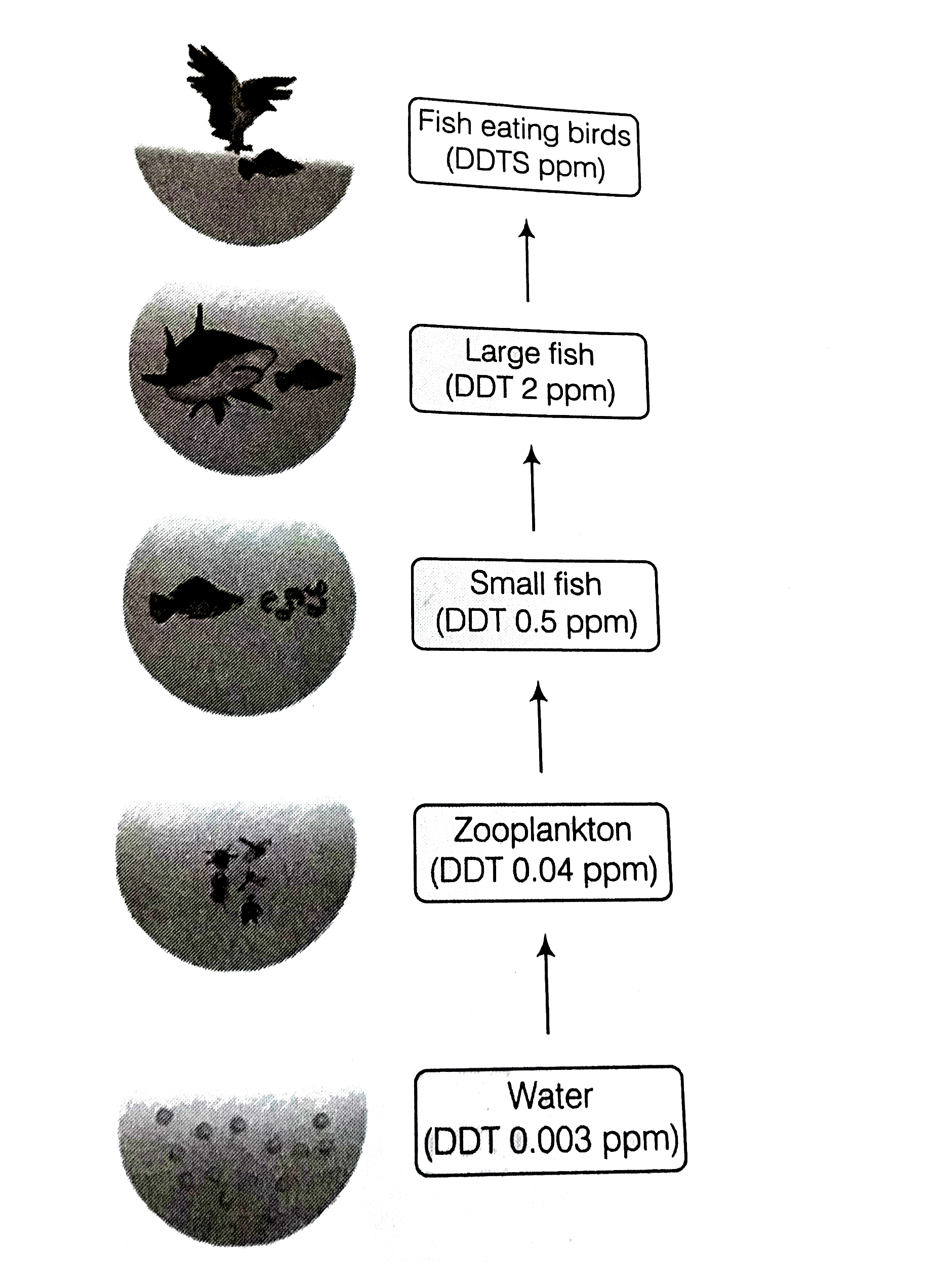In a study conduted, the concentration of DDT was found to increse in the successive trophic levels. The result of the study is shown below:

How does DDT accumulation in birds affect their population ? Explain.
In birds, high concentration of DDT distrurbs calcium metbolism. This causes thinning of egg shell that causes premature breaking of egg. So the birds population eventually decline.
Similar Questions
Knowledge Check
Level of DDT increases in concentration at successive trophic levels as
Ait is biodegradable pollutantBquantitative pollutionCcannot be metabolised or excreted by the or-ganismsDit causes dysenteryWhich of the following statements is not correct regarding biomagnification ?
(i) Mercury accumulated by an organism cannot be metabolised.
(ii) In the process of biomagnification, concentration of DDT is increased at successive trophic levels.
(iii) Accumulation of cadmimu can cause thinning of egg shell in birds.
(iv) DDT accumulation is a major cause of reduced population of fish eating birds.
(v) Biomagnification occurs only in aquatic food chain.A(i), (iii) and (v)B(iii) and (iv)C(iii) and (v)D(i), (ii) and (iv)Which of the following statements is not correct regarding biomagnification ?
(i) Mercury accumulated by an organism cannot be metabolised.
(ii) In the process of biomagnification, concentration of DDT is increased at successive trophic levels.
(iii) Accumulation of cadmimu can cause thinning of egg shell in birds.
(iv) DDT accumulation is a major cause of reduced population of fish eating birds.
(v) Biomagnification occurs only in aquatic food chain.A(i), (iii) and (v)B(iii) and (iv)C(iii) and (v)D(i), (ii) and (iv)
Our farmers still use DDt. How is the affecting the local bird population ?
View SolutionOur farmers still use DDt. How is the affecting the local bird population ?
View SolutionThe ecological terms suitable to describe the DDT accumulation at different trophic levels are given below. Select the right combination
I) Biomagnification term is used to describe the DDT accumulation at different trophic levels
II) DDT causes thinning of egg shell
III) DDT accumulation lead to eutrophication
View SolutionObserve figure and answer the following questions.

(i) The ecological term used to describe the DDT accumulation at different troohic levels ?
(ii) List any one effect of DDT accumulation on birds.
(iii) Will DDT accumulation lead to eutrophication ?
(iv) Does it affect the BOD?
(v) Name disease caused by accumulation of any heavy metal.
View SolutionObserve figure and answer the following questions.

(i) The ecological term used to describe the DDT accumulation at different troohic levels ?
(ii) List any one effect of DDT accumulation on birds.
(iii) Will DDT accumulation lead to eutrophication ?
(iv) Does it affect the BOD?
(v) Name disease caused by accumulation of any heavy metal.
View Solution

